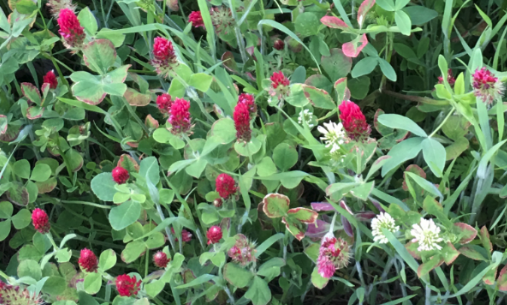
Choosing a cover crop mix may be a better option than a single seed.
Whether you’re new to cover crops or have years of experience, you’re probably debating if a seed blend is better than a single variety. Before committing to planting a cover crop blend, you need to make sure the seeds you’re considering will make a positive impact on your operation. This will ensure your investment helps accomplish the long-term goals you have for your forage.
Identifying the Goal
What is your goal for planting a cover crop mix? Is it nutrient management? Soil health? Erosion control? Alleviate compaction? Attracted pollinators?
If you have multiple goals, then a mix of seeds may best suit your needs. However, if you just need to control nitrogen, planting one cover crop, like a brassica, may be more suitable for you.
Cover crops can be grouped into categories or functional groups. A functional group is made up of species that have similar characteristics on how they perform and what they add to or take away from the soil’s biomass. These cover crop groups include grasses, legumes and broadleafs for warm and cool season varieties.
Choosing a Cover Crop Blend
When choosing a cover crop blend, first consider how many species to include. Studies show that a wider range of species in natural grasslands improve ecosystems. Whereas, in croplands, choosing a small number of species that complement each other can be beneficial.
For example, in a cool-season cover crop mix of grasses, brassicas and legumes, the brassicas will be the first to emerge. They are the fastest growing variety in this group and can provide early grazing, but they will be the first to die by a hard freeze. This same mixture in the spring will be dominated by the grasses which will scavenge N, provide erosion control and high quality grazing.
By planting a cover crop mix, you can grow a diversified range of microbials, rather than planting a single species. Some mixtures have been shown to increase disease resistance from plants susceptible to fungi by spreading out the plantings. A blend can also ensure a successful growing season despite weather extremes, as different species do their best in different weather conditions.
Other considerations in choosing the best blend for your operation is the planting date. The selected species must be able to provide their benefits and be terminated without causing delays in planting your actual cash crop.
Your Local Options
Missouri Southern Seed offers a couple top blends for cover crops, with each having its own distinct purpose.
Term N Mix – Cover Crop Mix is a fast growing variety to plant after corn or soybeans that will aid in erosion control. This blend consists of Daikon radishes, turnips, rape and crimson clover.
If you want to focus on adding more nitrogen to your soil, consider Fix N Mix – Cold Tolerant Cover Crop Mix. This cold tolerant cover crop mixture is a highly attractive choice for rotating with corn. It is a blend of Fixation balansa clover, Frosty berseem, Crimson clover and Daikon radish. Not only does this mix collect a large amount of nitrogen for the next cash crop, it also breaks up compaction.
Still not sure where to start? Check out this cover crop decision tool. Plug in your location and goals for your operation, and the tool will select your best options.
